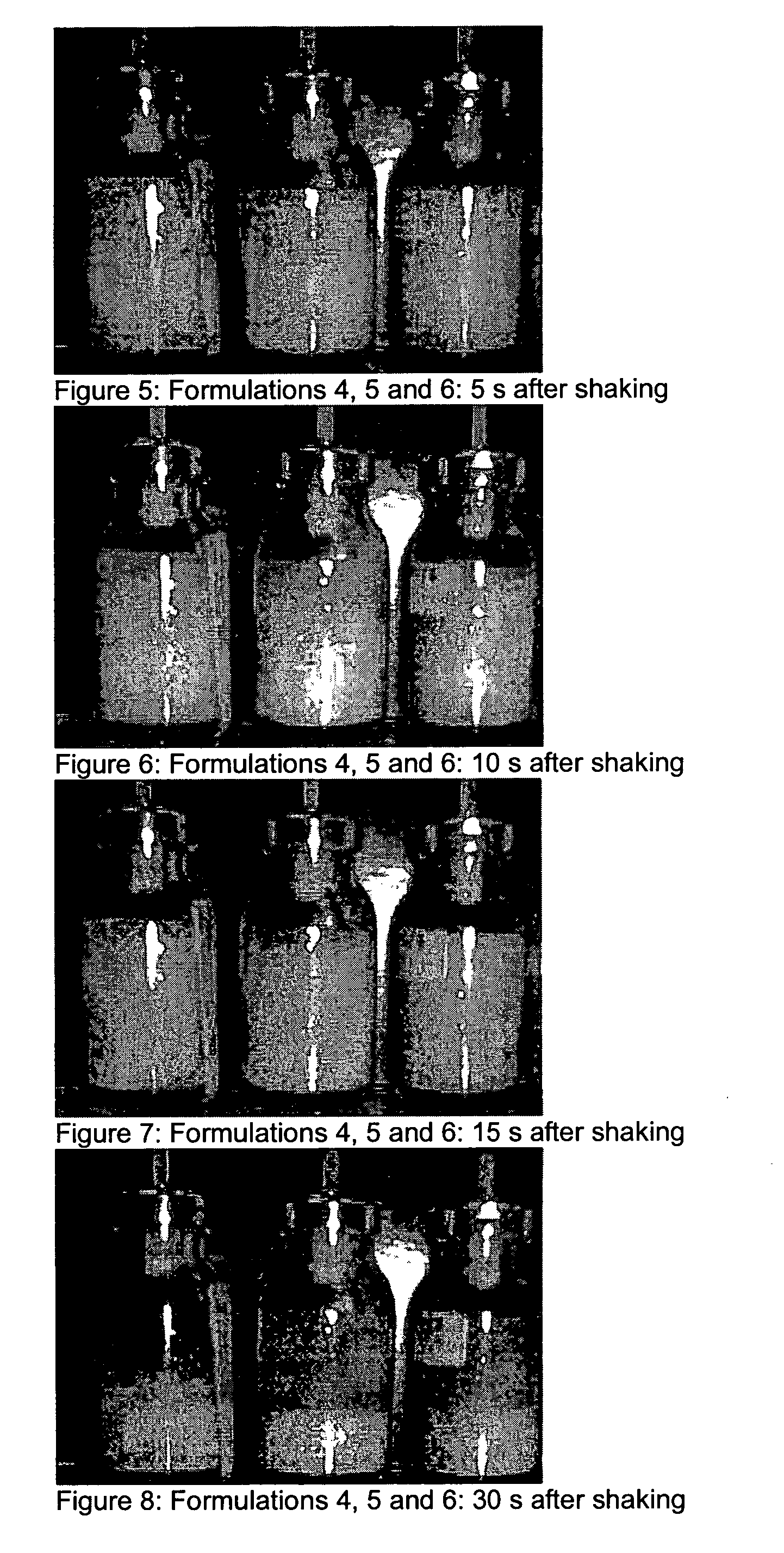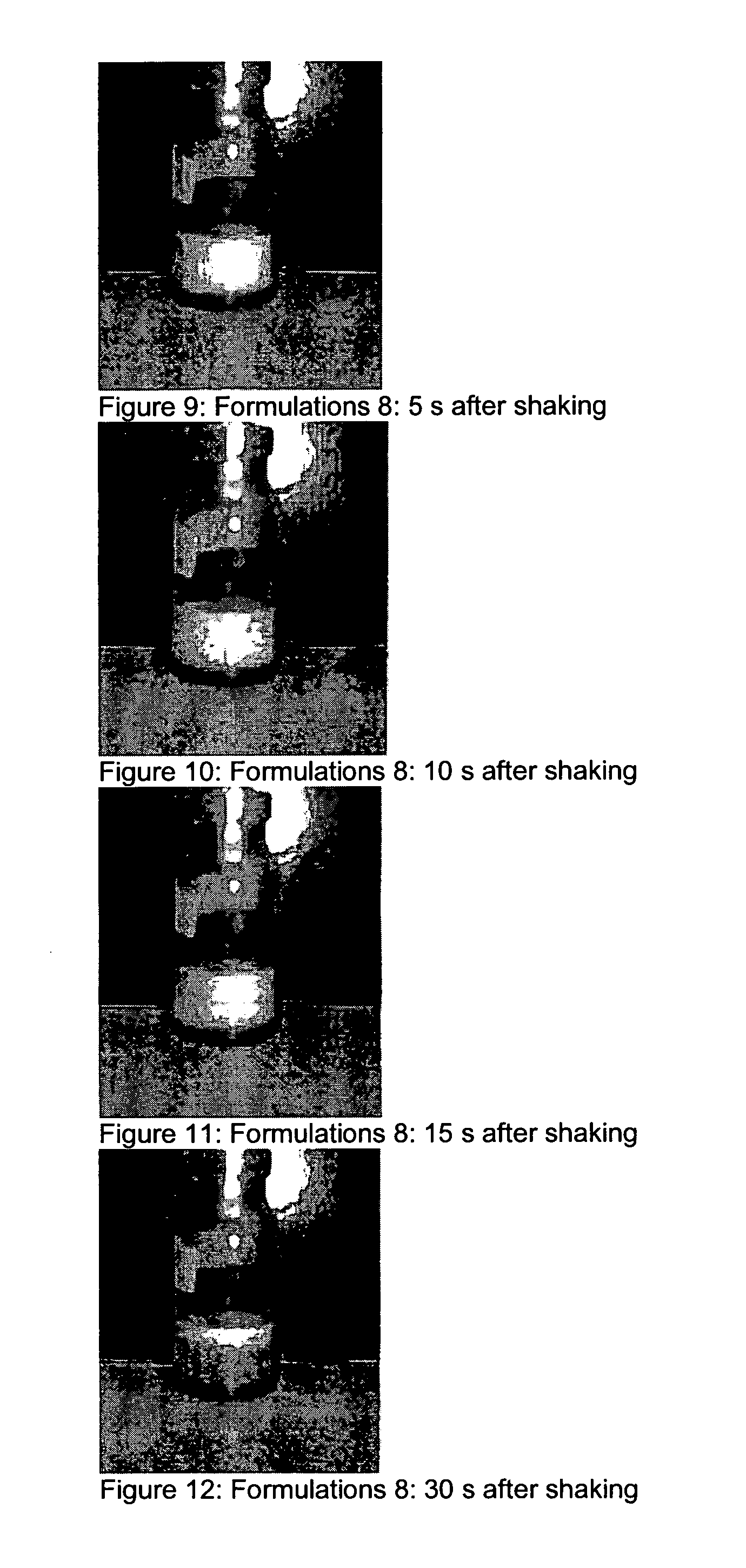Compositions for treating parkinson's disease
a technology for parkinson's disease and compositions, applied in the direction of drug compositions, biocides, dispersed delivery, etc., can solve the problems of reduced endogenous formation of l-dopa, general deterioration of all brain functions, early death, etc., to achieve rapid onset of therapeutic effect, safe administration, and accurate and relatively small dose of apomorphine
- Summary
- Abstract
- Description
- Claims
- Application Information
AI Technical Summary
Benefits of technology
Problems solved by technology
Method used
Image
Examples
example 1
[0165]Feasibility batch: Apomorphine hydrochloride (5.04 g, Batch No. GRN 0436) was dissolved in 250 ml purified water resulting in a 2% w / v total solids feedstock. The feedstock was spray dried using a bespoke Mini Spray Dryer with an inlet temperature of 155° C. and an atomisation pressure of 3 bar. The geometric particle size of the resultant spray dried powder (Batch No. RDD / 07 / 095) was determined using a Sympatec Particle Size Analyser, the mean of three analyses was as follows:
X10 (μm): 1.05
X50 (μm): 1.91
X90 (μm): 3.15
[0166]99 (μm): 4.12
[0167]Scale up batch: Apomorphine hydrochloride (14.9 g, Batch No. GRN 0436) was dissolved in 750 ml purified water resulting in a 2% w / v total solids feedstock. The feedstock was spray dried using a bespoke Mini Spray Dryer with an inlet temperature of 155° C. and an atomisation pressure of 3 bar. The geometric particle size of the resultant spray dried powder (Batch No. RDD / 07 / 096) was determined using a Sympatec Partic...
example 2
pMDIs
[0169]Preparation of pMDIs: the Powders Comprising Pure Micronised Apomorphine hydrochloride were measured into pMDI cans. Metering valves were clamped onto the cans, and these were back filled with HFA 134a propellant. Each can was shaken vigorously to generate a dispersion.
[0170]In Vitro measurement of pMDIs: An Andersen cascade impactor was used to characterise the aerosol plumes generated from each of the pMDIs. Air-flow of 28.3 litres per minute was drawn through the impactor, and 10 repeated shots were fired. Each pMDI was shaken and weighed in between each actuation. The drug deposited on each stage of the impactor, as well as drug on the device, throat and rubber mouthpiece adaptor was collected into a solvent, and quantified by HPLC.
[0171]The low solubility of apomorphine hydrochloride within ethanol-based HFA 134a pMDI formulations makes solution pMDI technology unavailable for apomorphine at high drug loading (600 μg / dose). Previously a low dose (<25 μg / 50 μl) HFA134...
example 3
Active / Passive DPIs Mechanofused Apomorphine with Magnesium Stearate Formulations that are Subsequently Combined
[0177]Combined formulations i.e. comprising different particles:
[0178](a) Apomorphine hydrochloride with magnesium stearate covering:
[0179]Micronised apomorphine hydrochloride and magnesium stearate were combined in a weight ratio of 75:25. This blend (˜20 g) was then milled by a mechanofusion process as follows. The powder was pre-mixed for 5 minutes at −900 rpm. The machine speed was then increased to ˜4,800 rpm for 30 minutes. During the milling treatment the mechanofusion apparatus is run with a 1 mm clearance between element and vessel wall, and with cooling water applied via the cooling jacket. The composite active particles were then recovered from the drum vessel.
[0180](b) Apomorphine hydrochloride with less magnesium stearate covering:
[0181]The experiment was repeated using the same procedure but the active particle and homogenised magnesium stearate were combined...
PUM
| Property | Measurement | Unit |
|---|---|---|
| volume | aaaaa | aaaaa |
| diameter | aaaaa | aaaaa |
| aerodynamic diameters | aaaaa | aaaaa |
Abstract
Description
Claims
Application Information
 Login to View More
Login to View More - R&D
- Intellectual Property
- Life Sciences
- Materials
- Tech Scout
- Unparalleled Data Quality
- Higher Quality Content
- 60% Fewer Hallucinations
Browse by: Latest US Patents, China's latest patents, Technical Efficacy Thesaurus, Application Domain, Technology Topic, Popular Technical Reports.
© 2025 PatSnap. All rights reserved.Legal|Privacy policy|Modern Slavery Act Transparency Statement|Sitemap|About US| Contact US: help@patsnap.com



